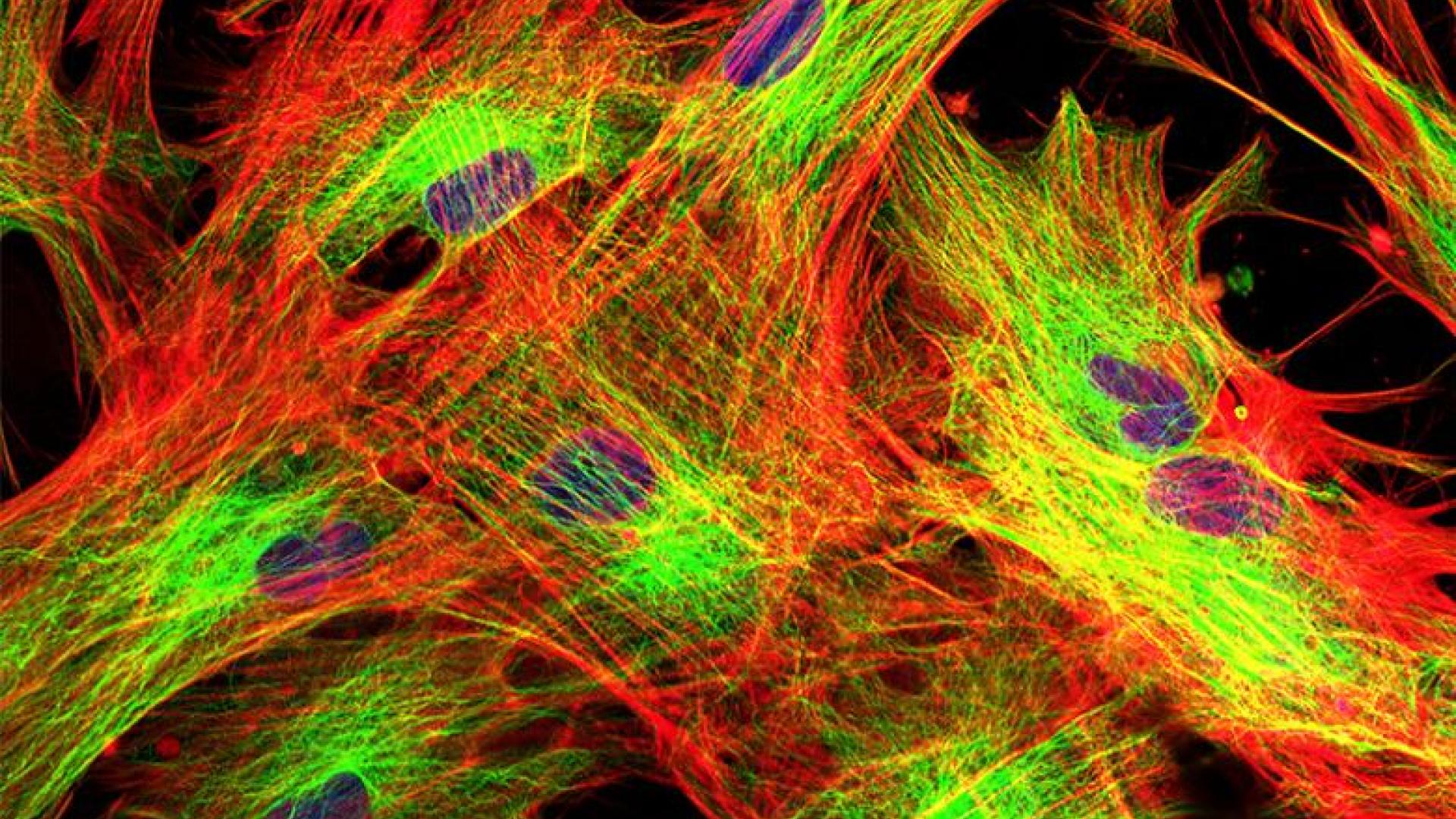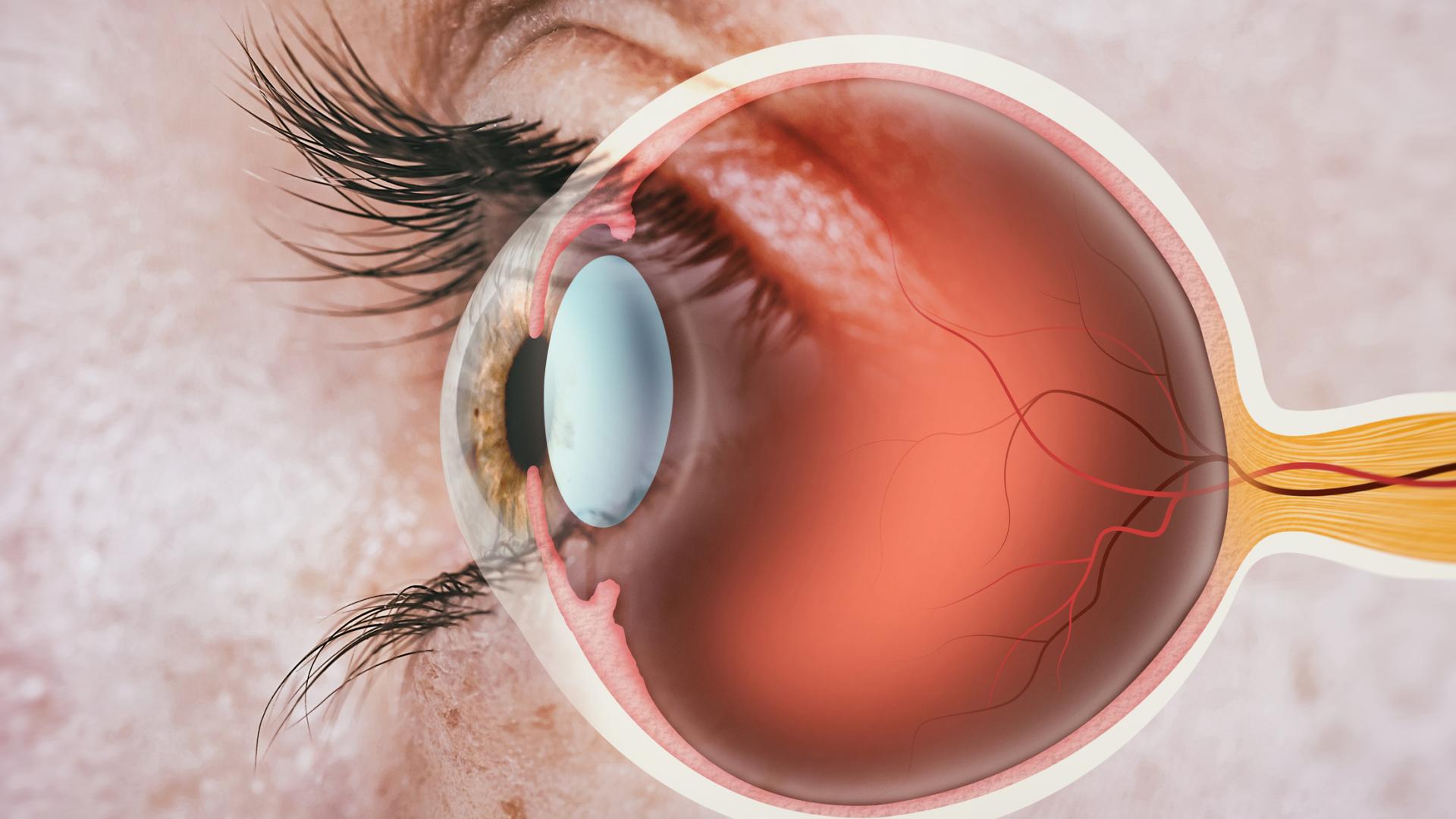
Secondary glaucoma is a broad term that encompasses many types of glaucoma that are the result of certain medical conditions in the eye or the body.
The focus of this article is on the more common causes of secondary glaucoma; however, there are also unusual and rare forms of secondary glaucoma, which are outside the scope of this article. In contrast, by definition, primary open-angle glaucoma or primary angle-closure glaucoma has no secondary cause that can be identified.
Secondary glaucoma can affect one eye or both eyes and can be divided into open-angle and closed-angle types.
Secondary glaucoma occurs as a result of another disease or injury that causes or contributes to an increase in the eye’s intraocular pressure. Secondary glaucoma may be caused by an eye injury, inflammation, a tumor, certain drugs such as steroids, and advanced cases of cataracts or diabetes. The type of treatment will depend on the underlying cause, but usually includes medications such as eye drops, laser surgery, or conventional surgery. If you have eye conditions that may lead to secondary glaucoma, it is important that you have regular vision exams that include glaucoma screening.
Watch: Secondary Glaucoma
Secondary Open-Angle Glaucoma
In open-angle glaucoma, the eye’s drainage angle (between the iris and the cornea) is in an “open” configuration. Secondary open-angle glaucomas include:
- steroid-induced glaucoma
- pigmentary glaucoma
- pseudoexfoliation glaucoma
- glaucoma associated with inflammation
- traumatic glaucoma
We will briefly discuss some of the more common forms of secondary open-angle glaucoma.
Steroid-Induced Glaucoma
Steroid-induced glaucoma most commonly occurs after the use of steroid eye drops, which are used for many different eye conditions and may be a necessary part of treatment. However, it can also occur in conjunction with steroids used on the skin around the eye, steroids injected into the eye, oral steroids, inhaled steroids, or intravenous steroids.
Patients with primary open-angle glaucoma have an increased risk of developing elevated eye pressure or glaucoma that is steroid induced.
The treatment of steroid-induced glaucoma is similar to open-angle glaucoma (eye drops, laser, or surgery) and, when possible, discontinuation of the steroids is recommended. Alternatively, switching to a non-steroidal anti-inflammatory medication or a steroid formulation that is less likely to cause elevated eye pressure may help the situation. Sometimes, however, steroids are a necessary part of eye treatment, in which case your ophthalmologist will work to control your eye pressure using eye drops and sometimes laser or surgical treatment.
Pigmentary Glaucoma
Pigmentary glaucoma is caused by the release of pigment from the iris (the colored part of the eye). The pigment deposits in the drainage system of the eye, cornea, and lens, as well as other parts of the eye.
Sometimes patients have plenty of pigment dispersed, but do not exhibit signs of glaucoma (pigment dispersion syndrome). Others will have elevated eye pressure and damage to the optic nerve.
These conditions tend to occur in people between 20 and 45 years of age, and more commonly in men than women. Another risk factor is nearsightedness, or myopia. The treatment of pigmentary glaucoma is similar to primary open-angle glaucoma, and patients with pigmentary glaucoma tend to respond better to laser trabeculoplasty than the average open-angle glaucoma patient.
Pseudoexfoliation Glaucoma
Pseudoexfoliation glaucoma is caused by deposition of flaky flecks of material in the drainage system of the eye, leading to increased eye pressure and optic nerve damage. This type of glaucoma may also respond better to laser trabeculoplasty.
Secondary Angle-Closure Glaucoma
Secondary angle-closure glaucomas occur when the eye’s angle (the angle between the iris, which makes up the colored part of your eye, and the cornea, which is the clear window front part of your eye) is narrow or closed by an identifiable cause such as:
- abnormal blood vessel growth (neovascular glaucoma)
- drug-induced secondary angle-closure glaucoma
- lens-induced secondary angle-closure glaucoma
- abnormal endothelial cells (iridocorneal endothelial syndromes or ICE), or
- uveitic glaucoma
In addition to the secondary angle-closure glaucomas mentioned above, there are other forms that are much more rare.
Neovascular Glaucoma
Neovascular glaucoma is a form of glaucoma in which abnormal new blood vessels grow on the iris and over the drainage system. It can happen in patients with diabetic retinopathy, or after a retinal vessel occlusion (a blockage of the small veins that carry blood away from the retina). This type of glaucoma often requires not only treatment of the elevated eye pressure, but also treatment of the underlying cause of the new blood vessel growth.
Uveitic Glaucoma
Uveitic glaucoma can actually be a secondary open-angle glaucoma, secondary angle-closure glaucoma, or both.
The open-angle form can be a steroid-induced open-angle glaucoma, since patients with uveitic glaucoma have to use topical, periocular, intraocular, and/or oral steroids to control the disease.
The secondary angle-closure form of uveitic glaucoma occurs because the inflammation inside the eye leads to scar formation in the drainage angle, which can gradually close the angle and lead to elevated eye pressures.
Summary
In summary, secondary glaucomas have many different causes. While these glaucomas are often treated in a way similar to primary open-angle glaucoma (with eye drops, laser, or surgery), sometimes the underlying cause of the secondary glaucoma also requires treatment.
About BrightFocus Foundation
BrightFocus Foundation is a premier global nonprofit funder of research to defeat Alzheimer’s, macular degeneration, and glaucoma. Since its inception more than 50 years ago, BrightFocus and its flagship research programs—Alzheimer’s Disease Research, Macular Degeneration Research, and National Glaucoma Research—has awarded more than $300 million in research grants to scientists around the world, catalyzing thousands of scientific breakthroughs, life-enhancing treatments, and diagnostic tools. We also share the latest research findings, expert information, and resources to empower the millions impacted by these devastating diseases. Learn more at brightfocus.org.
Disclaimer: The information provided here is a public service of BrightFocus Foundation and is not intended to constitute medical advice. Please consult your physician for personalized medical, dietary, and/or exercise advice. Any medications or supplements should only be taken under medical supervision. BrightFocus Foundation does not endorse any medical products or therapies.
- Eye Health









